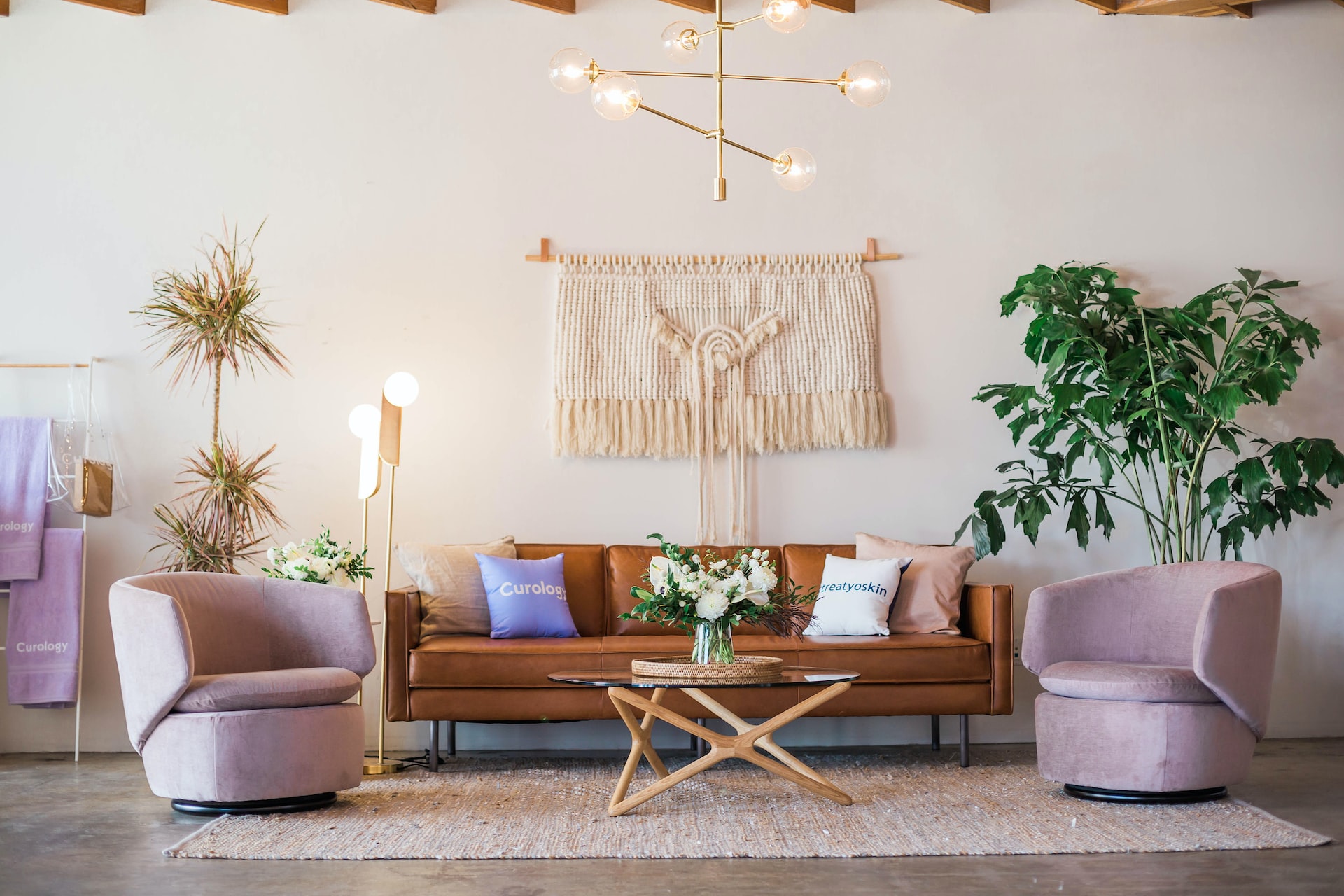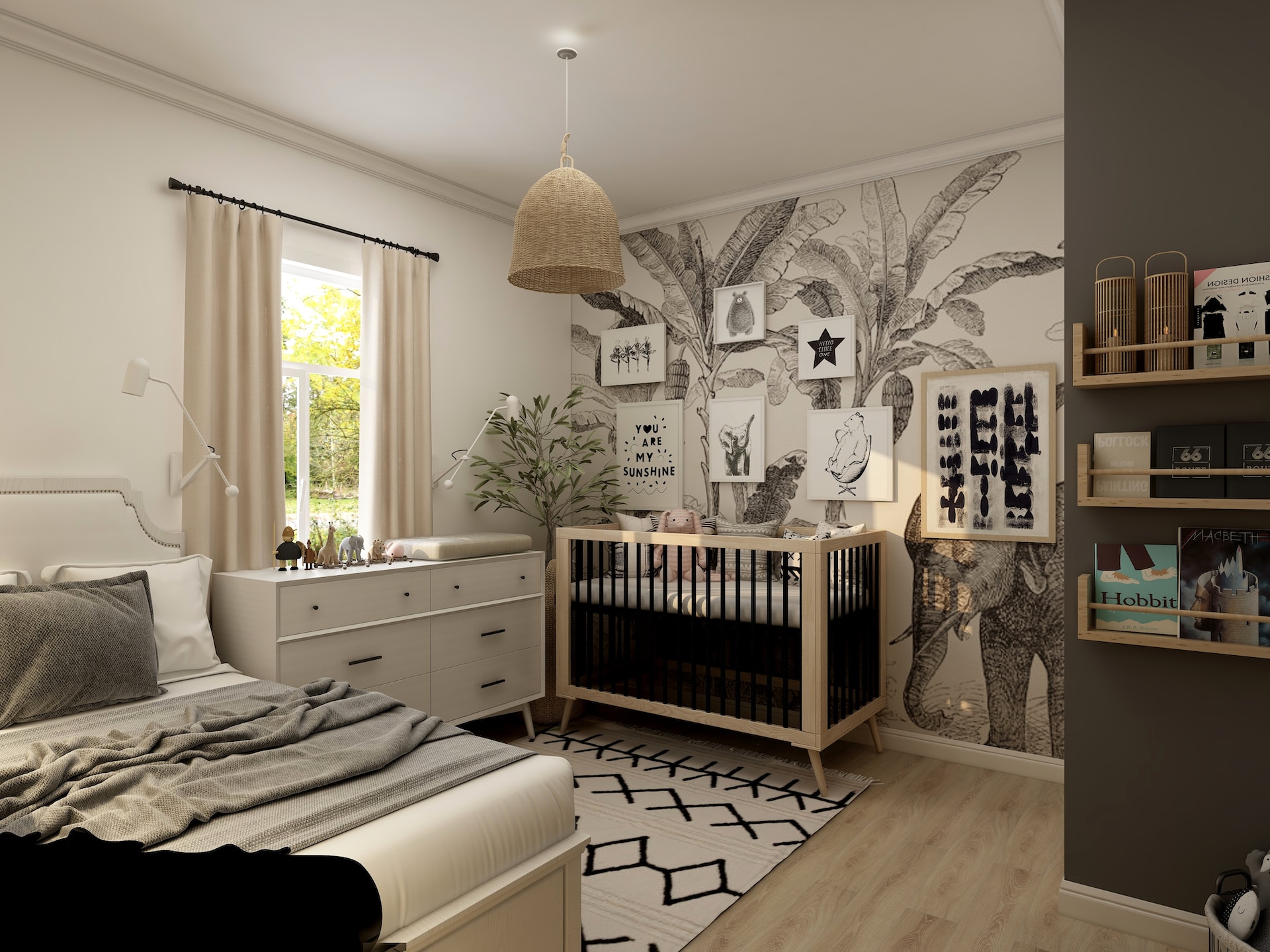Decorating with furniture involves selecting pieces that complement your existing decor and enhance the overall style and functionality of your space. When choosing furniture, it’s important to consider the size and layout of the room, as well as your personal style preferences and budget. Besides decorating, maintaining furniture is an important part of keeping your home looking and feeling comfortable and inviting. Regular cleaning and maintenance can help extend the lifespan of your furniture and keep it looking its best. Depending on the type of furniture, maintenance may involve regular dusting and vacuuming, polishing, oiling, or reupholstering. We’ll cover everything you need to know to extend the life of your furniture and keep it looking new.
Indoor furniture
I’ve heard of white-labeling in furniture — what does this mean, and why does it matter?
Why It Matters: Ever seen a chic dining set at multiple stores but under different names and price tags? That’s white-label furniture. It can make online furniture shopping confusing.
What is White-Label Furniture? About 71% of furniture products are white-labeled. One manufacturer crafts the piece, but different stores sell it, branding it uniquely with distinct prices. Imagine finding the same sugar with different brands at fluctuating prices.
Price Disparities in White-Labeling: While discount codes might knock off a few dollars, comparing identical products at trustworthy alternative stores can save you much more.
Understanding white-labeling is not just about hunting discounts; it’s about understanding the market and making informed choices.
Geoff Abraham of Spoken.io
What are some current trends in home furniture and decor?
“The last few years have been transformative in the way we view our living spaces and exist in them. We see a trend of rooms that feel lived in and are designed for use. There is an increase in layers and texture and embracing moodier tones to create environments that are restorative and serve a purpose beyond aesthetic. Natural wood tones, hand-built ceramics, pastoral art, earth tones, and natural fibers are coming together to create a dimensional experience. An emphasis on our relationship with our homes leads to design choices and results in spaces that look and feel good.
A great way to bring some of this into your own space is to look around and identify items that give you a positive emotion. Does a specific kind of collection bring you joy? Are you storing away any beautiful items that feel luxurious for everyday use? It might be a good time to bring them out. Our luxury items are often reserved for special occasions, and right now is a chance to bring that special touch into everyday living.”
Emily from Emily Keeney
Scandinavian: This style emphasizes simplicity, functionality, and minimalism. One of my favorite words to describe Scandi is “unfussy.” This style leaves out all the unnecessary bits. It usually features light-colored woods, such as birch or ash, and the pieces have clean lines.Minimalist: This style is all about simplicity and minimalism. It often features a limited color palette and simple, geometric forms. It’s another paired-back design style where the unnecessary is left out in favor of simple, clean lines. Materials used in minimalist furniture design include metal, glass, and natural wood.
Industrial: This style draws inspiration from factory or warehouse environments and features materials such as metal, concrete, and reclaimed wood. It often includes elements such as pipes and unfinished surfaces. There’s heavy use of distressed finishes and mixed elements together, like woods and metal. Much of the aesthetic comes from the utilitarian. You’ll often see industrial objects like tools and equipment repurposed as both décor and furniture.Contemporary: This style is characterized by a focus on simplicity, clean lines, and neutral colors. The focus is on functionality and a clean, streamlined appearance. You’ll often see materials like chrome, glass, and polished wood. Pops of color are usually reserved for accent pieces or artwork. These days, contemporary design often incorporates technology, such as charging stations or built-in speakers incorporated into furniture to enhance their functionality. These features are often “hidden,” which adds to the streamlined aesthetic.
Best of all, these 4 styles all pair very well together. So, in modern design, it’s not necessary to be strictly one thing or the other. You can pair Scandinavian and Industrial, or Contemporary and Minimalist, or Industrial and Contemporary. The foundations of “simple, unfussy, streamlined” allow you to mix and match furniture from any of these styles all you want!”
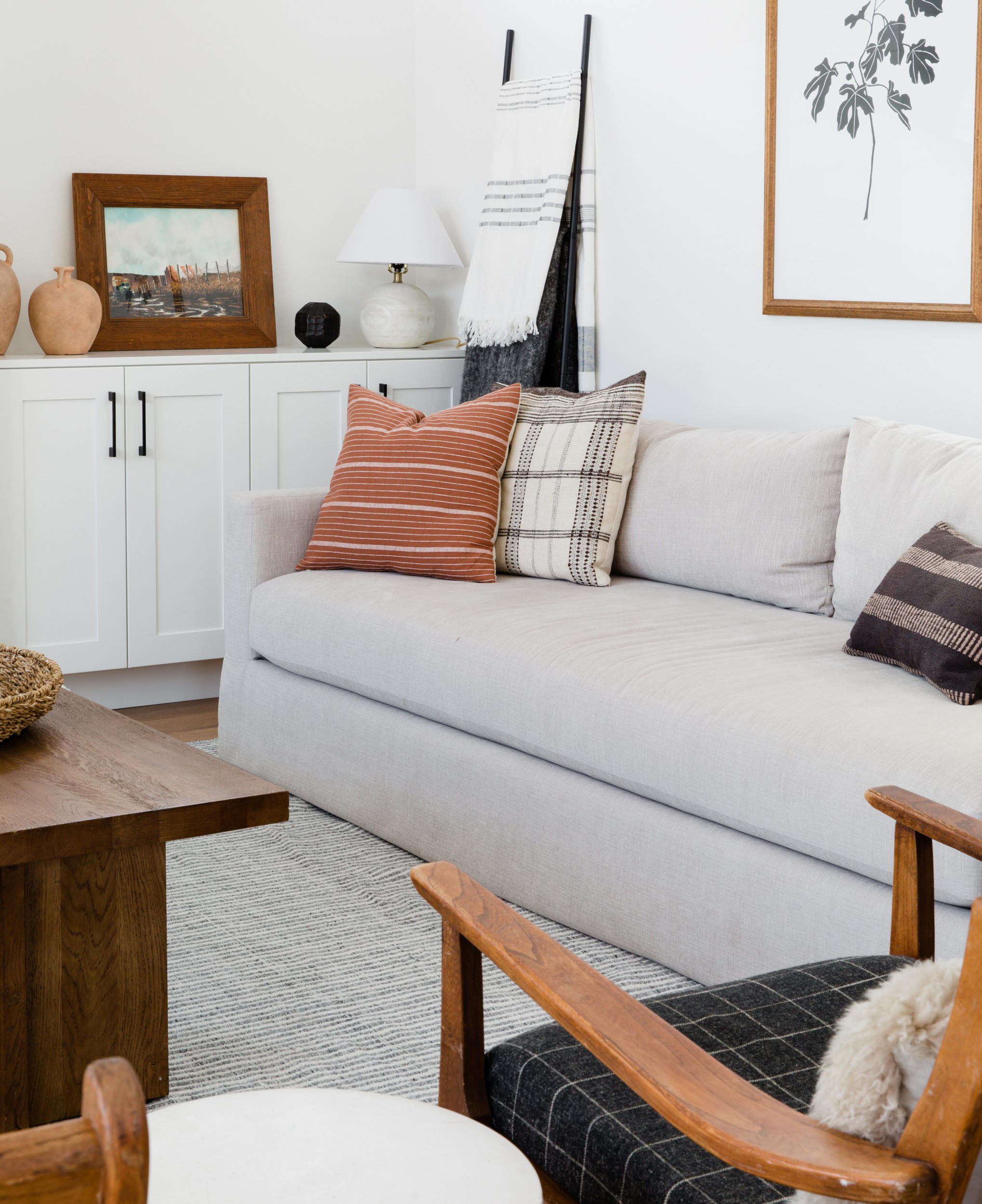
Photo credits: Emily Keeney
When designing your dream space, choosing the right furniture is key. Furniture is the basis of any room where family and guests gather to make special memories. Finding the right piece of furniture can be tricky, especially when shopping online. There are a few factors that we like to consider to help us determine the quality of a furniture piece for your home.
Firstly, look into the details – material, finish & construction are important factors that can tell you a lot about the quality of a product. Look for durable materials, like solid wood for tables or consoles, and quality linen for upholstery. When it comes to upholstery, we always recommend ordering a fabric swatch before committing to purchasing so you can see and feel the material and color in your space. At Caitlin Wilson, we offer all of our upholstery swatches for purchase. Performance fabrics are always worth it for easy cleaning and full-speed family living!
We also recommend investing in pieces that will last. If you invest in furniture properly made with high-quality materials, you will find a piece that lasts from room to room and even from home to home. Do your research and always think about quality, durability, function, and design before pulling the trigger on the best deal.
Shopping for furniture can feel overwhelming but give yourself time to look for the right pieces & invest in styles that will last for years.
How can I find high-quality furniture that fits within my budget?
Finding high-quality furniture that fits within your budget can be challenging, but here are some tips that can help:
Set a realistic budget: Determine how much you can afford to spend on furniture. Try to purchase the highest quality pieces for your budget.
Look for sales: Check out furniture stores for any sales or discounts on the type of furniture you are looking for. Many times they have sales around the holidays, such as Presidents Day and Labor Day, be sure to shop then for the best deals.
Invest in pieces that will last: Consider investing in large furniture pieces, like sofas, chairs, or case goods, that are durable and well-made so that they will last for years. Mix some less expensive items and save money on smaller pieces such as side tables, ottomans, and decor.
Do your research: Check out reviews online to see what other customers have to say about the quality of the furniture you are considering. And learn more about the construction of the piece. Things like kiln-dried hardwood, dovetail joinery, or eight-way hand-tied construction show that the piece is well made.
Look for warranties: Look for furniture with a warranty, so you can be sure that you are making a long-term investment.
Don’t rush: Take your time to find the right pieces of furniture at the right price. Rushing into a purchase can result in overspending or buying pieces that aren’t right for your space.
Look for furniture pieces that are classic and timeless in design. When you invest in a piece of quality furniture, you want it to have a longevity not only in construction but in style.
Libby Rawes from Sharp & Grey Interiors
Timeless design elements that can add character and charm to any room
“When it comes to designing a room, there are certain timeless elements that can add charm and character to any space. Statement lighting is an excellent way to achieve this, as a beautiful light fixture can not only provide function but also set the mood for the entire room. Incorporating natural materials such as wood, stone, or metal can add warmth and texture, creating a welcoming atmosphere. Patterns, whether it be geometric or floral, can add depth and interest to a room, while vintage or antique pieces can add a touch of nostalgia and history. Artwork, textures, and unique accent pieces can all add personality and charm to any space. By incorporating these elements into your room, you can create a space that is not only beautiful but also timeless and inviting.”
Kevin Twitty from Kevin Twitty Interiors
What are some common design elements that can be incorporated into custom furniture?
“With custom upholstered furniture there are many things you can do. One is that you can modify the cushions to change them from cushy to firm. Today, there is a huge selection of fabric options, with many performance fabrics making light-colored upholstery more realistic for families and pet lovers. You can also customize the trim colors – wood can be matched to other woods and finishes in your home. Some manufacturers can even add more durable finishes to wood pieces for a fee – finishes to make your pieces stain and scratch resistant. For cushions, you can choose between welted and non-welted. You can even go as far as how deep or shallow you want the seats so it feels the most comfortable for your body. The bottom line is, good manufacturers give you so many more options than you get with a catalog company.”
Allison from Allison Smith Design
Tips for creating a cozy and inviting seating area in a spacious living room
“Here are some tips for creating a living room design with a comfortable seating area in a large, open space. Depending on the size of your household, whether you are single or live with a family, your main seating area should reflect your lifestyle.
- Considering that you need a 3″ space for the main walkways through your room, 2″ space from the TV cabinet, and 1.6″ between a coffee table and sofa, you will need to measure the total perimeter of the space allocated for your main seating area. This is a guide when determining the size of furniture you can fit into that area.
- Decide whether you prefer a sectional (reclining, chaise, or standard) or a sofa with accent chairs. If a sectional, determine the configuration you prefer. A reclining sectional not only adds function to your seating but it adds a level of comfort that a regular sectional cannot offer. If you have kids or pets, a stain-resistant fabric is the best option. Leather is wonderful but not as durable as it can scratch and stain over time. Make sure the fabric or material you select is high quality and soft to the touch.
- Select accent chairs that complement the style of your living room. Make sure the chair is comfortable to sit in for a long period of time. Swivel chairs are great if your living room is adjacent to other open areas and if you love to entertain! Consider a patterned fabric for your accent chairs that complement the room style and colors.
- A seating area is not complete without a cozy area rug and great lighting! These decor details add style and softness to the area and define the seating area within a large open room.
- Add natural elements like plants, wood tables, and quartz or onyx to incorporate the feeling of comfort and nature into your space.”
Patricia from Exclusively To Design
How can you incorporate antique and restored furniture into modern interior design?
Incorporating antique and restored furniture into modern interior design is a great way to add character, a sense of history, and nostalgia to a space. A way to do this will be by following these tips:
Balance old and new: A few vintage pieces can go a long way! It’s all about creating the perfect balance between old and new to ensure it feels manageable and clean. Find that sweet spot where antique furniture fits with today’s stylish vibes.
Consider the color scheme: Antique and restored furniture pieces can blend seamlessly into a modern room’s existing scheme OR serve as an eye-catching contrast. Either way, it will be stunning, but remember your overall goal when sourcing pieces.
Pay attention to scale: Antique and restored furniture pieces can be more prominent and bulkier than modern pieces, so be mindful of scale when deciding where these antique beauties will live! Ensure the item’s size blends well into your space so you don’t feel crowded. Make sure each item fits comfortably in the space without overwhelming the room.
Accessorizing: Remember the considerable impact of accessories; this is where you can quickly and safely bring antique and modern pieces with pillows, rugs, or artwork.
Combining antique and restored furniture into the modern interior design will make for a perfect classic spin on your home decor where mixing and matching old-meets-new pieces leads to a timeless design!
Karen Rohr, Interior Designer at Mackenzie Collier Interiors
How can I choose furniture pieces that complement the scale of a large room without overwhelming it?
“A well-planned space is well balanced in the footprint of the furniture, space planning, and vertical scale. Think High, Medium, and Lows. How are you activating the vertical height, space planning, and floor, so the room doesn’t look stagnant?
I like to create multiple usage areas in a large space by dividing the room into multiple seating areas. This gives the room intimacy without making it overwhelming. I like to use one or two large pieces of upholstery to anchor the space and then add furniture pieces of various sizes to balance the room. I like to use fewer, more important pieces of furniture rather than adding too much. I activate the height with molding trims, wallpaper, or wall treatment to create detail in the space. Always have a well-scaled rug to anchor the various seating areas—different rugs for each seating area or a large-scale rug that activates the entire room. Most importantly, don’t focus too much on matching and perfect symmetry. Balance a space with collected curated pieces that look good together but are not perfectly matched.”
Swati Goorha from Swati Goorha Designs
What are some guidelines to follow when placing furniture in a small living room?
“A small living room requires thoughtful consideration about furniture placement in ways which can enhance the appeal of your house. Here are some guidelines which you must follow while placing furniture.
- “What’s all your furniture pointed at?” This is what you must think and create a focal point which all of your furniture should be pointed at. It can be a wall unit, where TV is installed, or an accent wall.
- Make it cozy by putting sofa and chairs closer. Maybe in the middle of the room. Avoid making the mistake of putting furniture against the walls. It might create space in the middle, but not be a very good idea for warm conversations.
- Shop for furniture based on your living room size. If you buy furniture after getting inspired by lifestyle magazines and it doesn’t fit, it will backfire.
- Use light colors to cover the walls, or take advantage of a window. A floor-to-ceiling window, with similar-sized neutral color draperies, will make the room appear larger.
- If you have a small living room that has a kitchen nearby, go for an open living room plan. In this way, you can entertain your guests while cooking.
These are only a few guidelines that will help you arrange your furniture in the best possible way.”
John Hayes from House to Home
“When it comes to designing a small living room, it’s important to be strategic about the placement and selection of furniture to make the most out of the limited space. As an interior designer, I recommend following these guidelines to ensure your small living room feels cozy, functional, and visually appealing.
- When you’re limited by size, getting measurements of your space and picking appropriate-sized furniture is key. You’ll want to avoid overly bulky or oversized pieces that overwhelm the room. Coming up with a list of what you want to achieve in the space (number of people who can sit at one time, activities that will occur in the room, etc.) is a good first step. Then come up with a floorplan to help support the needs of the space.
- Create an anchor point to group your furniture around. This could be a fireplace, TV, or even an area rug.
- Consider using multi-functional pieces, like an ottoman that doubles as storage or a sofa sleeper, to maximize your use of space.
- Use vertical storage solutions like wall-mounted shelves or cabinets to free up floor space. Stay organized and use visually appealing organizational products such as baskets so your space can remain functional and beautiful.”
Kimberlee Gorsline from Kimberlee Marie Interior Design
Best advice to arrange furniture in a family room to accommodate different activities
“Using the furniture layout to dictate the activities that can happen in a space allows for more variety than centering your furniture around a specific feature such as a TV, fireplace, wall feature, etc. One way that I love to do this is through a layout that I call lounge seating. Create this layout in your home by selecting 4 – 6 beautiful chairs in a circle around a coffee table. This layout allows for family communication, game night, wine and cheese night, business conversations, etc.”
Nikki Klugh from Nikki Klugh Design Group
Ways to arrange furniture in a large bedroom to make the space feel cozy and comfortable
“Many years ago, I lived in a home with a very long rectangular bedroom. At one end was the en suite bathroom, and windows at the other end. What I would have loved was to expand the bath, but that was not financially an option. What was a great option was two-fold. One fold was to create a closet and dressing area complete with a large mirror and place to sit to put on a hose and/or shoes. The other fold was to create a sitting/tv area. The television was put on a swivel mount towards the sitting area and then swiveled towards the bed for night watching. Beautiful lighting, lounge furniture, and a coffee table with books for enjoyment. These mini-spaces added living value to the bedroom for many years.”
Sandy Kauffman from Space & Company
Creative ways to add personality and style to my kitchen through furniture and decor?
“The kitchen is the heart of many of our homes. It’s where the whole family gathers in between the rush of daily life. Take a moment and consider the atmosphere you want to create when you step into your kitchen and how you want your family and friends to feel in this collective space. Are you imagining creating a calming effect with cool colors or a burst of excitement with lively patterns? Design-wise, the kitchen is the perfect place to explore your creativity and sense of personal style. And one of the quickest and easiest ways to add personality to your kitchen is with furniture and décor.
When I help clients design a kitchen, I encourage them to discover the colors, textures, and styles that give them joy and then incorporate those into every aspect of the design: cabinets, counters, flooring, lighting, and art.
Here are some tips for making your kitchen reflect your personal style:
- Accent one or more walls using textures or colors. Paint is the simplest choice, but wallpaper, especially textural wallpaper such as woven grasses or brick, stone, or concrete imitations, can help create a focal point.
- Add a fireplace. Affordable linear electric fireplaces can look great and add warmth and comfort to your kitchen
- Look to counter stools and dining chairs as a style element. Add variety by making each a different color. If you have room, an upholstered funky reading chair is an inviting place to curl up with a cookbook.
- Search out unconventional large artwork and photography, especially anything food-related.
- Think about your cooking philosophy: What do you like to cook? Then display it creatively using cookware, collectibles, and utensils.
- Display flowers, fruit, and non-toxic candles in artisan-made bottles and vessels.”
Larisa McShane from Larisa McShane & Associates
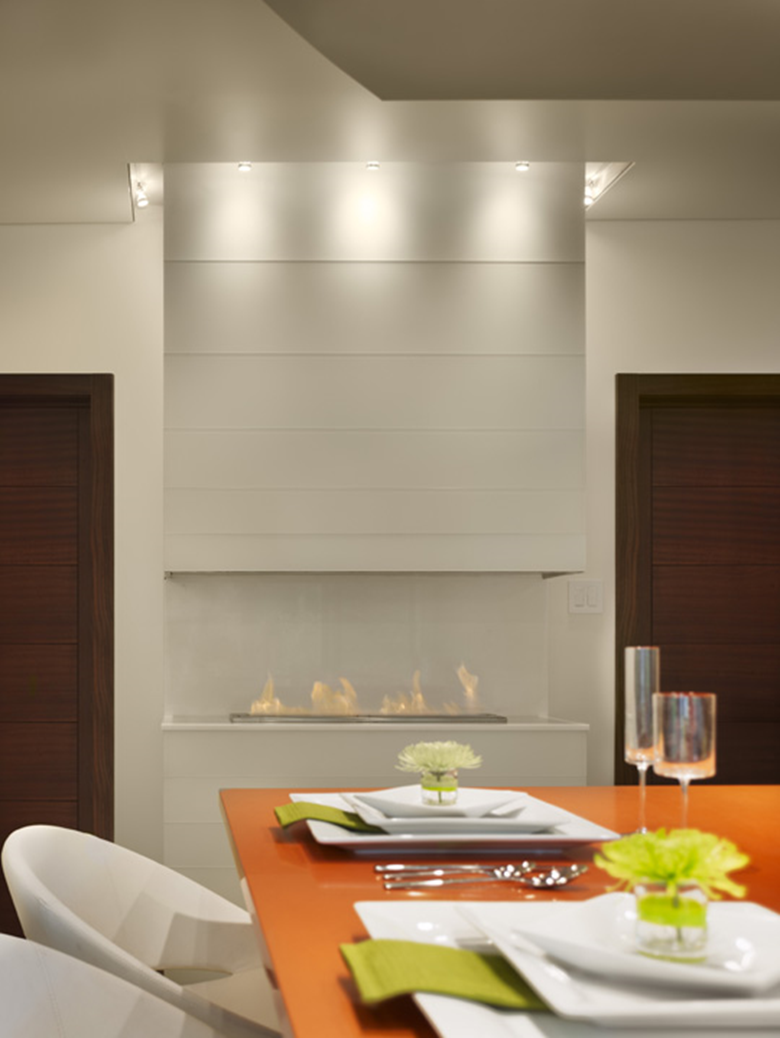
Photo credit: Larisa McShane
3 Uncanny ways to increase kitchen storage
Family and friends naturally gravitate to the heart of your home. Snacks, drinks, and conversation flow freely in a warm and comfortable kitchen. Formal dining rooms are becoming scarce as kitchens draw people like a magnet.
Be ready for the troops by incorporating new storage solutions into your kitchen where everything is within arm’s length but out of sight until needed. Custom islands with drawers, doors, and a sitting area can be a great way to organize pans, cutlery, dishes, papers, and more.
Invest in a few rolling plant stands and hide bulky machines, like crockpots and blenders, in pantry closets. The more space available on counters, the better. Use the V corner of intersecting cabinets as a cubicle for often-used small appliances, like coffee makers, toasters, and can openers.
Every tiny bit of kitchen space counts, even your toe-kick. One delightful hack is to convert unused cabinet space under lower cabinets for little-used items. This could be the perfect spot for a junk drawer or small items like batteries, rubber bands, and pencils.
Other suggestions include making storage inside stool seats or benches and using cabinet organizers, such as turntables and dividers.
William Lane from EvolutDesign
Space-saving furniture options for a home office or study area
“With many of us shifting to a work-from-home model, creating an office space that can be incorporated into our existing living spaces can be challenging. I love highly organized spaces that look presentable regardless of the time of day. That means designing office spaces with ample storage is a must. When designing an office space, I like to start with custom built-ins. I like to think through all items that will be present in the space, from file cabinets to printers. If you can stow away these items in your built-ins, that allows more room to create a dual-use space. I like to combine a guest room with an office space or gym. There are several options when it comes to providing a bed for your guests. You can build a murphy bed into your office built-ins, add an armchair that folds out into a twin-size bed, or feature a daybed or sofa bed. Depending on the size of your space, by keeping office items stowed away, your space can transform quickly into a guest room or gym at any time.”
Alyce Lopez from The True House
How can I maintain the quality and appearance of my new couch or sofa over time?
“Now that you have your beautiful new sofa home there are some things that you should do to help maintain the look of your sofa.
- Fluff your cushions, especially ones with down or feathers.
- Once a month take your cushions and pick them up and bang on all sides of the cushions, this will help prolong the compressing of microbubbles in the foam.
- Vacuum your upholstery regularly.
- Avoid sunlight as it discolors fabric or leather.
- For leather, you want clean and condition your leather to maintain a like-new appearance. You need to consider your environment for how often this should be done. This should be every two months and if more humid, you can do it 2-3 times a year but the more you take care of your leather the longer it will last and look amazing.
- Rotate cushions if possible for even wear.
Taking care of your upholstered furniture, sofas, and chairs, need not be a chore and need not be complicated. The tips we recommended above will help to get the most out of your upholstered furniture.”
Outdoor furniture
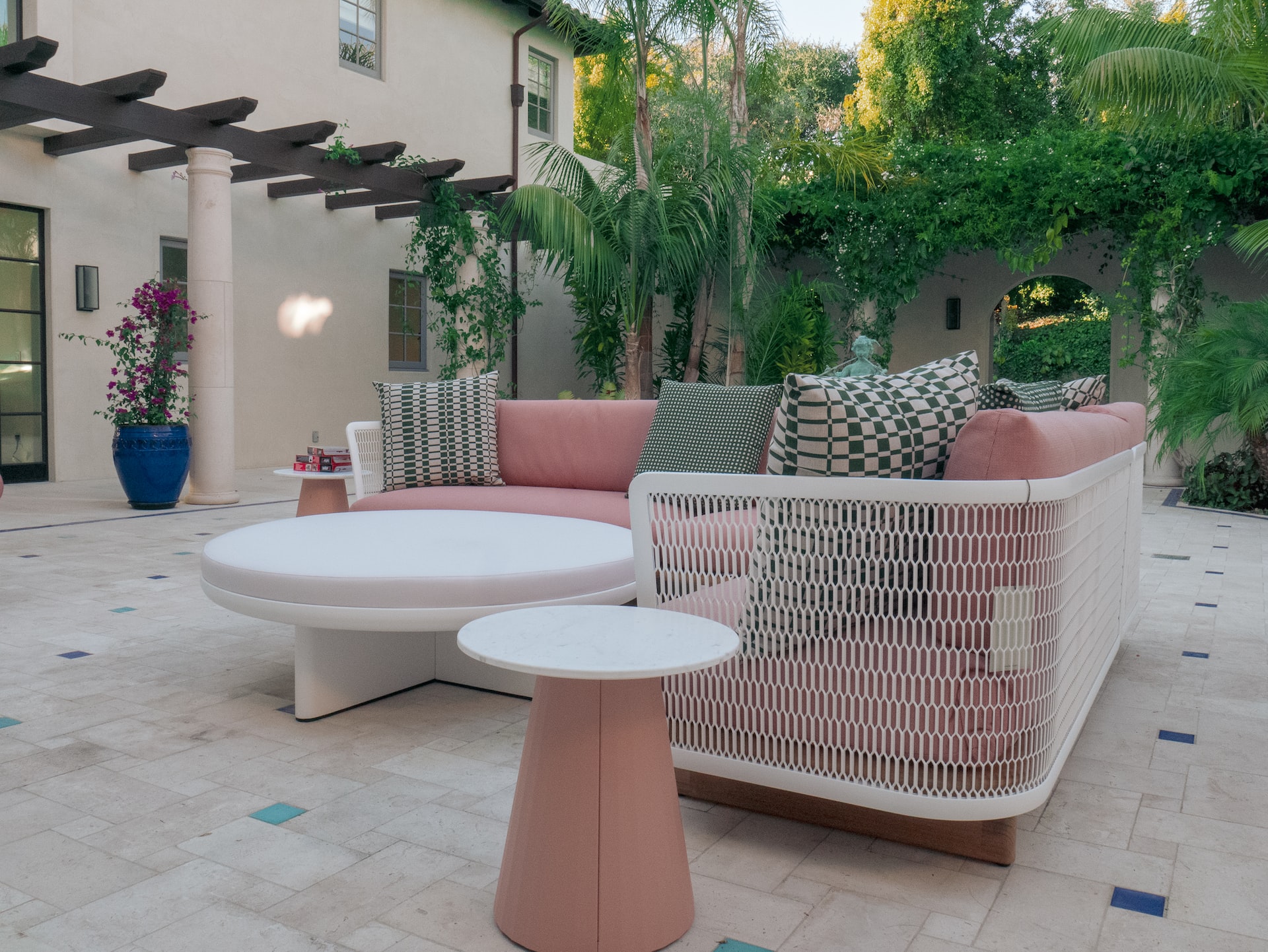
Furniture can be an excellent addition to any outdoor space, providing a comfortable and stylish place to relax and enjoy. With proper care and maintenance, outdoor furniture can last for many years, making it a worthwhile investment for any homeowner.
Designing with outdoor furniture involves selecting pieces that not only look great but also fit the specific needs of your outdoor space. When designing your outdoor space, consider the size and layout of your area, as well as the overall style and design aesthetic you want to achieve. For example, if you have a small balcony, you may want to select compact furniture that maximizes space. Alternatively, if you have a large backyard, you may want to choose a mix of seating and dining options to accommodate different activities and guests. It’s also essential to consider the materials and durability of the furniture, as well as any weather-resistant features that may be necessary.
Adding accessories such as cushions, rugs, and lighting can help create a cohesive and inviting outdoor living space that can be enjoyed year-round.
“Outdoor furniture should last in your backyard for years, not one season. Each material has its own unique characteristics, and some are more durable and long-lasting than others. Below are some of the best materials for outdoor tables and chairs.
All-weather wicker is amongst the most popular materials for outdoor furniture due to its organic look and low maintenance. It is a synthetic material made from a type of plastic called high-density polyethylene (HDPE). It is more durable, resistant to elements, and fade-proof than real wicker or rattan, and also requires much less care since it does not crack or split.
Aluminium is a strong and durable metal that never rusts. Bare aluminum, however, does corrode, especially if exposed to seawater. Nowadays, most aluminum outdoor furniture is finished off in scratch-resistant metallic powder-coating, which enhances its appearance, and at the same time, makes it corrosion-resistant.
Teak is arguably the best hardwood to use for wooden outdoor furniture. Due to its high silica and natural oil content, teak could last for decades in a wide variety of climates with minimal maintenance — rain or shine. Being naturally weather-resistant and its ability to withstand even the harshest weather conditions, teak is one of the best materials for outdoor furniture in a fully exposed environment.”
Danie Huang from FurnitureOkay
How to choose the best outdoor sofa?
Choosing the best outdoor sofa might seem like something of an overwhelming decision when there is so much choice available and so many variables to consider, with everything from budget to functionality.
Here are some of our top tips to help you make this process a little more enjoyable and a little less stressful.
- Material: by its nature, an outdoor sofa needs to feature materials that are weather-resistant, durable, and easy to clean. Be sure to check the specifications of the sofa you are considering and pay particular attention to any advice on maintenance and any guarantee that is offered. A quality product will be backed with a strong warranty.
- Price: it goes without saying that budget will dictate quality. Outdoor furniture usually carries a higher price tag but for good reason. A quality product will need to stand the test of time and, obviously, the conditions it is exposed to.
- Style: in order to narrow down your options, try to look for styles that match your surrounding environment. Outdoor furniture always works best when it complements its setting, as opposed to dominating it. There are many different styles of outdoor sofas available, from traditional to modern, so be sure to select one that complements your outdoor space and also works in harmony with your interior décor.
- Comfort: is key when it comes to outdoor furniture. Look for sofas with thick cushions that are made from high-quality materials. Check that the material is fade-resistant, easy to clean and, critically, is fast-drying. It is also important to check that the material will not transfer its dye when wet.
- Size & Shape: consider the size and shape of your outdoor space when selecting a sofa, by first assessing the available space you have to work with. If you have a small balcony or patio, a compact sofa or a loveseat might be the best option. If you have a larger space, a modular, corner or a larger sofa might be more appropriate.
Barney Bell – David Salisbury
How can I create a cozy and inviting outdoor living space with furniture and accessories?
“To start, pick and decide what the area is for, such as dining, relaxing, or a bit of both. Once you know what the area is for, pick a theme (Mid-Century, Farmhouse, Country Garden, Tropical Getaway) and get furniture that matches the idea. Be sure to embellish with charming accessories like cushions, rugs, and/or a fireplace.
With any given size for the outdoor space, adding various garden plants will seamlessly blend in with your décor and create that outdoor zen space for you and your guests. Another idea is to add a water fountain that creates sights and sounds – enhancing the relaxation vibe further.
With any outdoor furniture purchase, make sure that the items are practical and comfortable. They should be made of weather-ready materials that withstand the elements and provide easy care for daily use. Check the labels and verify that the cushions are quick-to-dry, the fabrics are washable or made of performance materials, and the furniture frames are powder-coated steel.”
Winny from New Pacific Direct

Does it really matter what furniture you buy?
Furniture is an essential component of any home, and choosing the right furniture can have a significant impact on the overall feel and functionality of your living space. Good quality furniture provides comfort and relaxation, which is vital for your well-being. Comfortable and supportive pieces like sofas, beds, and chairs can help you feel refreshed every time you use it. Moreover, furniture can define the style of your home, and choosing pieces that complement your personal style can create coherence and make it more welcoming.
Keep in mind that investing in well-made, durable furniture can save you money in the long run as cheap furniture can wear down quickly and require replacement. Old, worn-out furniture can harbor dust, mold, and allergens that can cause respiratory problems.
Maintaining your furniture is just as important as choosing good furniture, and regular cleaning and upkeep can prevent damage, stains, and wear and tear. This can ensure that it remains comfortable, attractive, and functional for years to come, ultimately increasing the value and enjoyment of your investment in your home.
A note on furniture maintenance and protection
After purchasing good quality furniture, it is essential to create and stick to a maintenance plan. Maintaining furniture involves regular cleaning and upkeep to prevent damage, stains, and wear and tear. Protecting furniture, on the other hand, involves taking measures to prevent damage from accidental spills, scratches, or other mishaps.
The most important aspect of furniture maintenance is cleaning. Regular cleaning can prevent dust, dirt, and other debris from accumulating on your furniture and causing damage. Use appropriate cleaning products for your pieces, as some materials can be sensitive to certain chemicals or abrasive cleaning agents. Always follow the manufacturer’s instructions for cleaning and care, as this will help to preserve the quality and lifespan of your furniture.
Protecting furniture from accidental damage is also crucial. For example, using coasters under drinks and avoiding placing heavy objects on furniture can prevent scratches, dents, and other damage. Similarly, using protective covers or pads can prevent damage from spills, stains, or other accidents. Take precautions when moving furniture, as lifting or dragging heavy items can cause damage.
One of the best ways to protect furniture is to invest in home insurance. Home insurance can protect your furniture in case of damage due to natural disasters like floods, fires, storms, or from accidental damage caused by household members or guests. Talk to your agent to ensure that your policy covers your furniture adequately, including coverage for the full cost of replacement or repair. This is especially important with fancy furniture like expensive or high-quality sets, heirloom pieces, pianos, and grandfather clocks. Since they are so valuable, it’s important that your policy includes coverage for the cost of repairing or replacing these items.
Caring for and maintaining your indoor and outdoor furniture is essential to ensure that it lasts for years and remains in good condition. Whether you need to buy furniture to create a beautiful home design or refresh your current furniture, use this guide to get started. Regular cleaning, protection from the elements, and avoiding damage from misuse or accidents are crucial steps in keeping your furniture looking its best. Remember, investing time and effort in caring for your furniture now can save you money and hassle in the long run.
